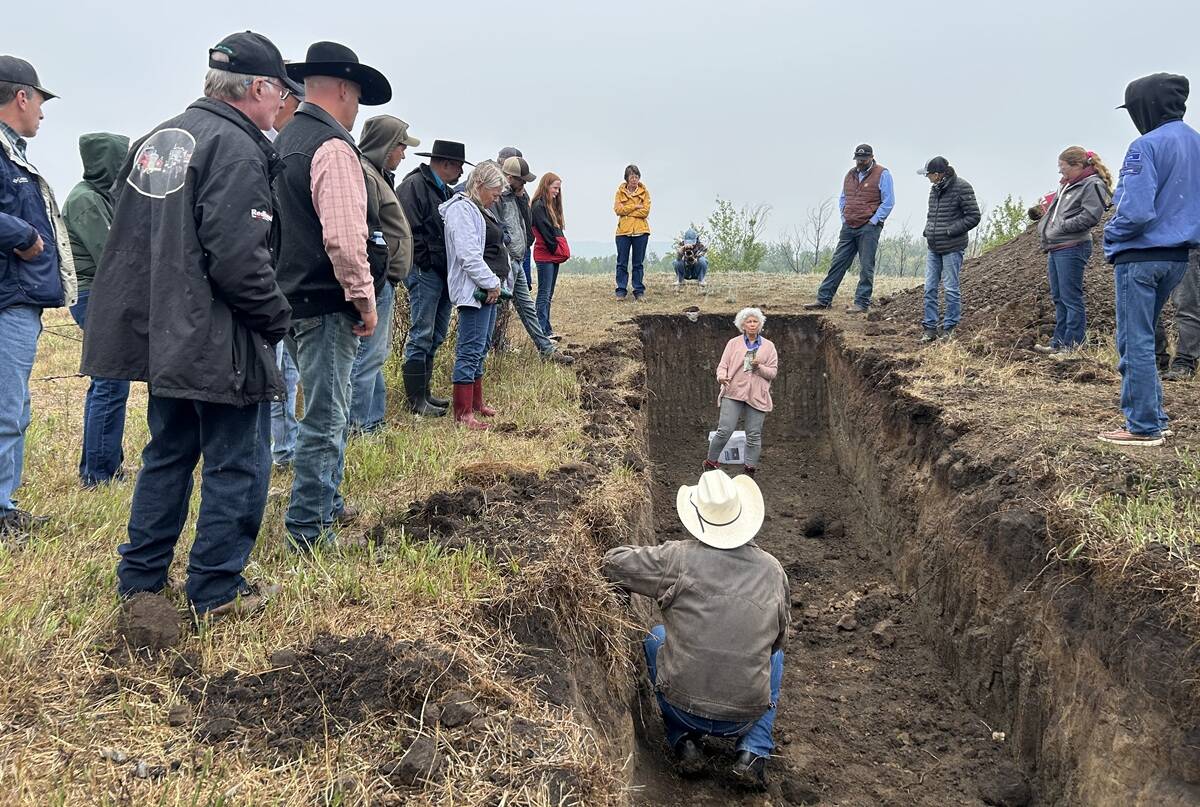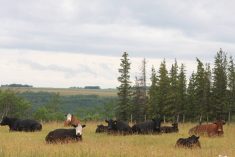Depending on who you talk to, U.S. President Donald Trump is either a righteous genius, acting in the best interests of America, or a blustering fool who doesn’t know what he’s doing.
Personally, I don’t think either of those assessments is correct, or fully correct, anyway. I think Trump understands how to create chaos and find opportunity in the confusion. As I wrote this column in February, Trump had granted a 30-day reprieve on the 25 per cent tariffs in Canada but slapped 25 per cent tariffs on steel and aluminum imports. By the time our March issue of Canadian Cattlemen comes out, who knows where we’ll be at? But I think we’re in for months of chaos leading up to the renegotiation of the Canada-U.S.-Mexico trade agreement in 2026. Canada’s beef industry doesn’t seem to be the target, but we don’t want to be collateral damage, either.
Al Mussel, Douglas Hedley and Ted Bilyea wrote a policy note in early February, which they circulated to media. They pointed out we are in limbo, at least until we know Trump’s true objective. Perhaps by the time you read this, that objective will become clear. Personally, I think “border security” is an excuse to fire off executive orders. There were a few other possibilities listed in that policy note. Perhaps it’s an attempt to keep Canada and Mexico off-balance leading up to the trade agreement. It’s also possible Trump will target our dairy industry in trade talks, among other sectors, and this might be meant to “force settlement on terms favourable to the U.S.,” they write. Maybe they’re trying to offset tax cuts with tariffs. Maybe they’re trying to encourage re-shoring in the U.S. by threatening tariffs, with no real intention of enacting them. They could also be trying to encourage re-shoring by pushing exchange rates to more competitive levels for U.S. manufacturing. All those things seem quite likely to me, at least right now.
Of course, we’ve all read the articles and opinion pieces casting wider nets. Perhaps Trump wants to control the Arctic, with its minerals and opening shipping lanes. Maybe it’s all about water. Canada and the U.S. have been renegotiating the Columbia River Treaty, and came to an interim agreement last year. The Columbia River originates in B.C. and flows into Washington and Oregon, and is the “very large faucet” Trump referred to earlier this year, as fires raged through Los Angeles.
Read Also

Improving soil health on the ranch
Yamily Zavala, PhD, talks soil health for farmers and ranchers at a grazing club field day at Paradise Hill, Saskatchewan.
If you’re feeling a bit overwhelmed and exhausted just reading this, that’s the point. These kinds of tactics simply wear people out. They also leave people confused, overwhelmed and angry, all of which make them more prone to making rash mistakes or becoming inert.
Mussel, Hedley and Bilyea also write that to counteract Trump’s current tactics, we need more focus, time, people and financial resources than usual. Their 30-day to-do list for our leaders (political, business and ag) included:
- Identifying our interests concerning the U.S. This means gaining a deeper understanding of Canada’s own vulnerabilities and opportunities, not just those of the U.S., right down to the level of individual processing plants.
- Being very well-prepared. Take what you think is sufficient and double it.
- Government helping organizations and firms prepare, as not all will have the resources needed.
I have to say, as I was writing this, I didn’t feel overly hopeful that those things would get done within 30 days, but I would love to be wrong. Right now, we have a Parliament that’s not even in session, and an almost inevitable upcoming federal election. Whoever forms government will have their work cut out for them, as they try to catch up, but I hope they’ll have the focus and mandate to deal with all of this effectively.
It’s also going to be more difficult to get good information out of the U.S. government, as Mussel, Hedley and Bilyea write. Many of the career bureaucrats are being purged, replaced by people with more perceived loyalty to the Trump administration and less experience. On the other hand, maybe all that internal chaos can be used to our advantage somehow. I imagine some of those thrown into unemployment by the new administration will be willing to share their insight with sympathetic Canadian colleagues.
Ultimately, chaos is a double-edged sword even for those who love weaponizing it. Stress and uncertainty take a toll on those wielding the blade, too. Trump and his people are bound to make mistakes — don’t interrupt them when they do. If we end up in a full-blown trade war, it may become a war of attrition. Victory may come down to whoever has the most endurance, the most focus and makes fewer big mistakes.
It’s crucial to start setting ourselves up to protect our trade agreement. We can’t let emotion wrought by short-term chaos compromise the big picture. There is no point in trying to big-dog Trump — we don’t want him escalating things unless we know we have real leverage. I’m not saying we shouldn’t use any counter-tariffs, but our leaders need to be strategic, and we don’t need anyone threatening to do things we aren’t prepared to do.
It’s only a couple of years to the mid-term elections in the U.S., and four until the next presidential race. Before we know it, we may be back to dealing with the usual protectionist measures from the Democrats, or a more traditional Republican administration. In the meantime, we cannot get strong-armed into bad trade deals or other crippling, long-term agreements.
















